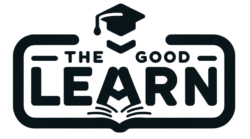Students’ development is the focus of the preparation education center. The public speaking and critical thinking course contributes to public discourse through public speaking. In the course, students learn how to improve the following ideas to public audiences, such as:
- Develop
- Research
- Organize
- Write
- Delivery
Students learn how to form and supply critique
Creating clear, focused, concise, and ethical content for identifiable public audiences requires that. Students need to be intelligent, critical listeners, and thoughtful speakers. At the end of the class, students must be:
Determine the intent of each presentation delivered and heard
Understand and apply the 5 classical canons of rhetoric, which trace the traditional tasks in designing a clear speech:
- invention
- arrangement
- style
- memory
- delivery
What is a critical thinking course?
Critical thinking courses promise to show the students how the disciplinary practices introduced in that class use five lenses:
- reasoning
- representation
- cultural judgment
- information literacy
- metacognitive reflection
Critical thinking courses show how those skills and practices relate to a main domain of thinking and at least one domain. By having professors articulate the different domains in which a CT course operates, the goal is to help everyone see the interrelated nature of courses in various disciplines.
Benefits of the Critical Thinking Courses
Critical thinking courses emphasize the conscious development of several skills by active learning rather than the accumulation of knowledge through memorization. They do so by helping students boost those skills with varied pedagogical methods that teachers specify. The courses ask students to demonstrate skills so that the teacher assess the student’s proficiency in a higher-order cognition, such as:
- application
- analysis
- synthesis
- evaluation
While specifics make one feel penned, they offer a place from which to start adjusting and gauging the effect and practice of preparation education. Selecting courses as critical thinking, and preparation education classes have great goals:
- It helps students acquire skills to foster success in all classes.
- It helps students combine learning from various disciplines.
- It helps students identify and apply skills.
Goals of Critical Thinking Courses
Critical thinking is the art of reasoned judgements based on:
- interpreting
- understanding
- applying
- synthesizing evidence
These are gathered from observation, experimentation, and reading. Being critical doesn’t mean finding fault. It assesses evidence from various sources and makes reasoned conclusions. As the result of the analysis, you decide that piece of evidence is not robust or you disagree with the conclusion, but you must state why you have come to this view and integrate this into the bigger picture of the literature
.
Being critical will go beyond describing what is heard in lectures or what you read, which involves:
- Synthesising
- Analyzing
- Evaluating
What you have learned to create your argument or position. Critical thinking is an important part of all disciplines and subjects, such as:
- engineering
- science
- arts
- humanities
The types of evidence employed to develop arguments are different, but the process and techniques are the same. Critical thinking may require both postgraduate and undergraduate levels of study.
Critical thinking courses can be a big help for students in preparation for education.

